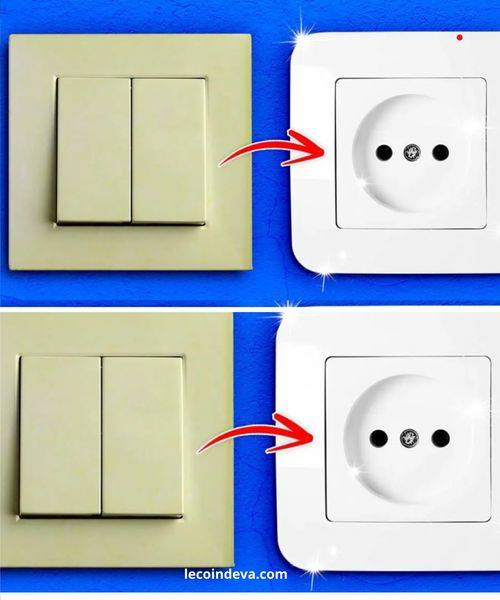ADVERTISEMENT
Certainly! Here’s a polished article based on your topic:
Yellowed Sockets and Switches? Here’s the Trick to Lighten Them and Make Them Look New
Over time, white or cream-colored electrical sockets and light switches tend to yellow, losing their fresh and clean appearance. This discoloration happens due to exposure to heat, UV light, and natural aging of the plastic material. While replacing them is an option, it can be costly and time-consuming. Fortunately, there are simple tricks you can try at home to restore the bright look of your sockets and switches without the need for a full replacement.
Why Do Sockets and Switches Yellow?
The yellowing is caused mainly by a chemical reaction in the plastic called oxidation, often accelerated by heat from electrical current and sunlight exposure. Older switches and sockets were made with materials that are more prone to this discoloration. Nowadays, many manufacturers use additives to slow down the yellowing, but older fixtures still need some TLC.
The Simple Trick to Lighten Yellowed Sockets and Switches
One of the most effective and widely recommended methods involves using hydrogen peroxide or specially formulated plastic whitening gels. Here’s how you can do it:
Materials Needed:
- Hydrogen peroxide (3% solution is fine)
- A small container or plastic wrap
- Cotton swabs or soft cloth
- Gloves (to protect your hands)
Steps:
- Turn off the power at the circuit breaker to ensure safety.
- Remove the socket or switch cover plate carefully using a screwdriver.
- Clean the cover plate with soap and water to remove surface dirt and grime. Dry completely.
- Apply hydrogen peroxide generously on the yellowed plastic. If using a gel or cream, apply it evenly over the surface.
- Wrap the cover plate with plastic wrap to keep the peroxide from evaporating quickly and to allow it to work better.
- Leave it to sit for several hours — ideally under indirect sunlight or a warm spot. The light helps accelerate the whitening process.
